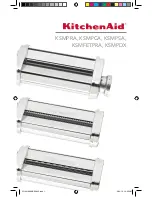
1/12
55
CONTAMINATION/CLEANUP CHART
Symptoms/Findings
Required Cleanup Procedure
•
No symptoms or suspicion of contamination
Normal evacuation/recharging procedure
•
Moisture/Air Contamination symptoms Refrigeration
test kit and/or acid oil test shows contamination
Refrigeration system open to atmosphere for longer
than 15 minutes No burnout deposits in open
compressor lines
Mild contamination cleanup procedure
•
Mild Compressor Burnout symptoms Oil appears
clean but smells acrid Refrigeration test kit or acid
oil test shows harmful acid content No burnout
deposits in open compressor lines
Mild contamination cleanup procedure
•
Severe Compressor Burnout symptoms Oil is
discolored, acidic, and smells acrid Burnout
deposits found in the compressor, lines, and other
components
Severe contamination cleanup procedure
Mild System Contamination Cleanup
Procedure
1. Replace any failed components.
2. If the compressor is good, change the oil.
3. Replace the liquid line drier.
NOTE: If the contamination is from moisture, use
heat lamps during evacuation. Position them at
the compressor, condenser and evaporator prior to
evacuation. Do not position heat lamps too close to
plastic components, or they may melt or warp.
Dry nitrogen is recommended for this procedure. This
will prevent CFC release.
1. Follow the normal evacuation procedure, except
replace the evacuation step with the following:
• Pull vacuum to 1000 microns. Break the vacuum
with dry nitrogen and sweep the system. Pressurize
to a minimum of 5 psig (34kPa).
• Pull vacuum to 500 microns. Break the vacuum with
dry nitrogen and sweep the system. Pressurize to a
minimum of 5 psig (34kPa).
• Change the vacuum pump oil.
• Pull vacuum to 500 microns. Run the vacuum pump
for 1/2 hour .
NOTE: You may perform a pressure test as a
preliminary leak check. You should use an electronic
leak detector after system charging to be sure there are
no leaks.
1. Charge the system with the proper refrigerant to the
nameplate charge.
2. Operate the Blended Ice Machine.
Severe System Contamination Cleanup
Procedure
1. Remove the refrigerant charge.
2. Remove the compressor.
3. Wipe away any burnout deposits from suction and
discharge lines at compressor.
4. Sweep through the open system with dry nitrogen.
NOTE: Refrigerant sweeps are not recommended, as
they release CFCs into the atmosphere.
5. Install a new compressor and new start
components.
6. Install suction line fi lter-drier in front of compressor.
7. Install a new liquid line drier.
8. Follow the normal evacuation procedure, except
replace the evacuation step with the following:
• Pull vacuum to 1000 microns. Break the vacuum
with dry nitrogen and sweep the system. Pressurize
to a minimum of 5 psig (34 kPa).
• Change the vacuum pump oil.
• Pull vacuum to 500 microns. Break the vacuum with
dry nitrogen and sweep the system. Pressurize to a
minimum of 5 psig (34 kPa).
• Change the vacuum pump oil.
• Pull vacuum to 500 microns. Run the vacuum pump
for 1 additional hour.
9. Charge the system with the proper refrigerant to the
nameplate charge.
10. Operate the refrigeration system for one hour. Then,
check the pressure drop across the suction line
fi lter-drier.
• If the pressure drop is less than 2 psig (14 kPa), the
fi lter-drier should be adequate for complete cleanup.
• If the pressure drop exceeds 2 psig (14 kPa),
change the suction line fi lter-drier and the liquid line
drier. Repeat until the pressure drop is acceptable.
• Operate the refrigeration system for 48 – 72 hours.
Replace the suction line and liquid line drier if
necessary.
Summary of Contents for Multiplex Ms-8
Page 59: ...1 12 59 Blender Scale Schematic Shaver Schematic ...
Page 62: ...62 1 12 Notes ...
Page 63: ...1 12 63 Notes ...










































